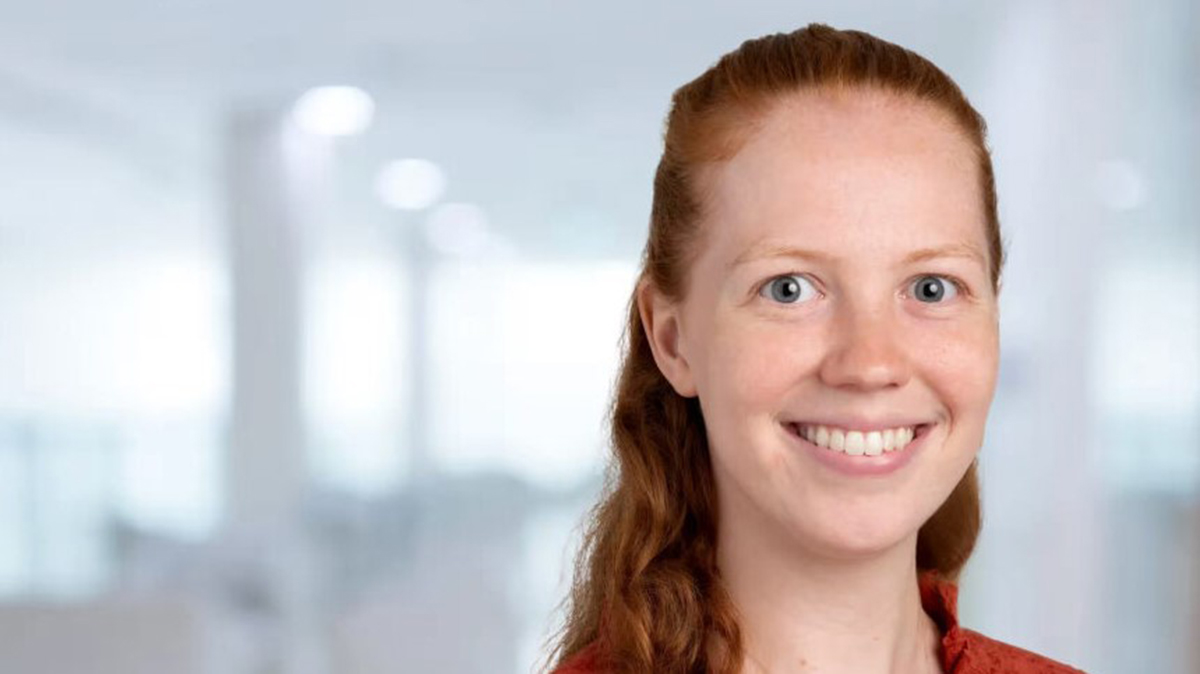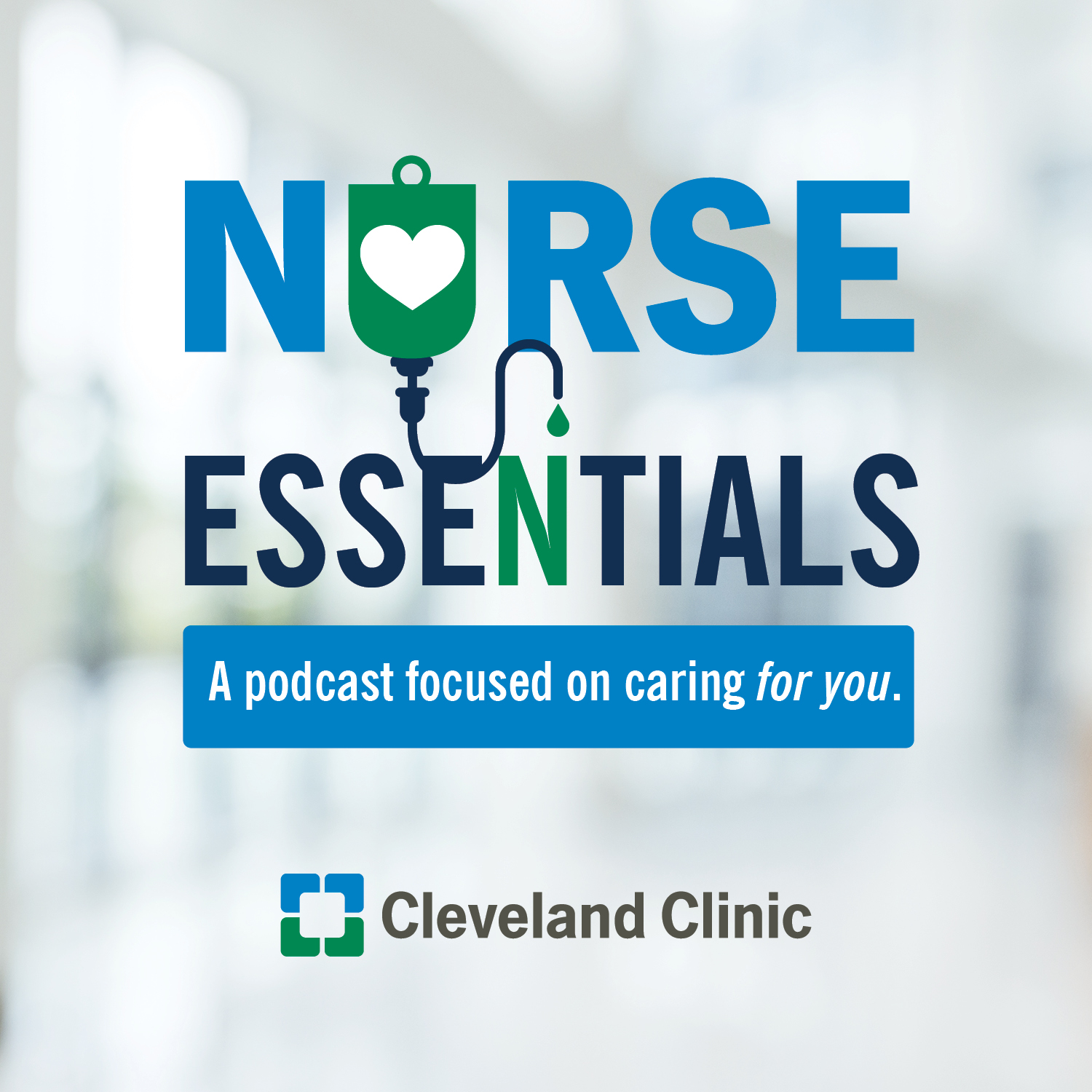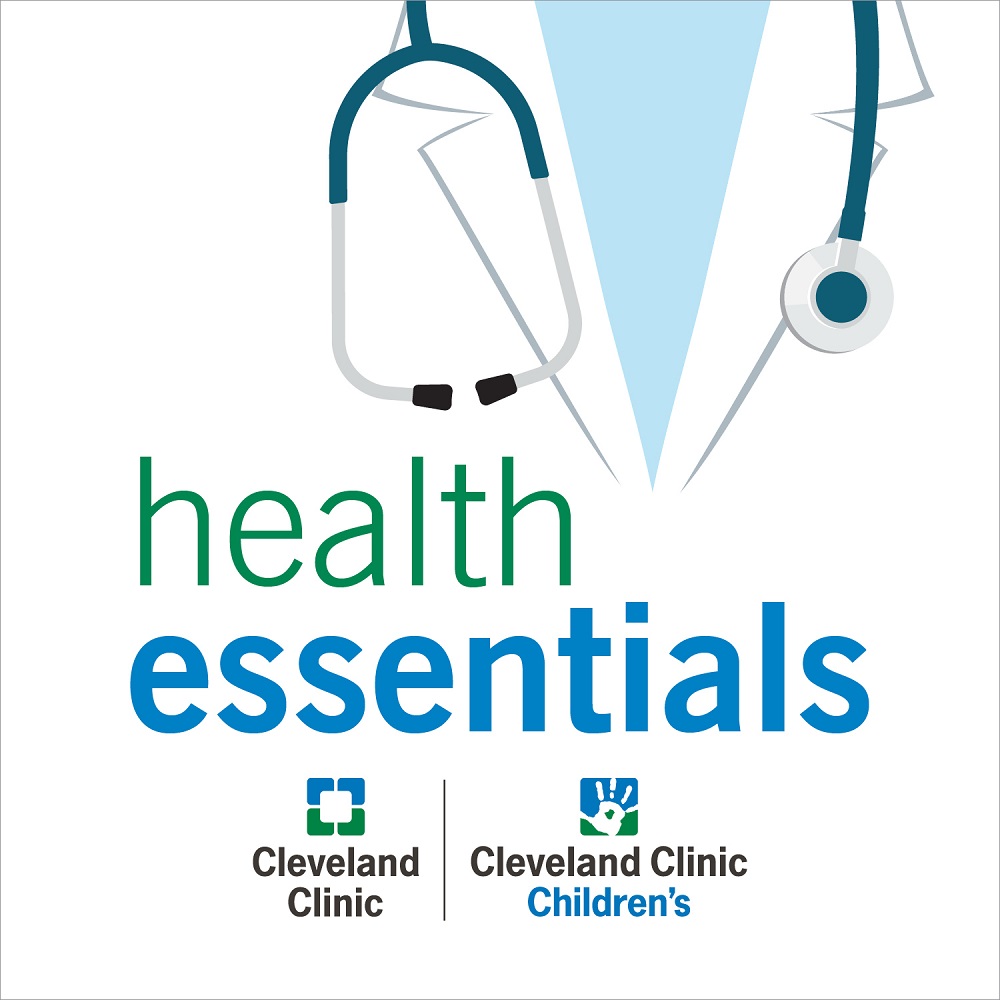Helping Children Cope with a Family Member’s Hospitalization

In this episode of Nurse Essentials, host Carol Pehotsky welcomes Molly Gleydura, a certified Child Life Specialist at Cleveland Clinic, to explore the vital role nurses play in supporting not just adult patients, but also the children connected to them.
Subscribe: Apple Podcasts | Podcast Addict | Spotify | Buzzsprout
Helping Children Cope with a Family Member’s Hospitalization
Podcast Transcript
Carol Pehotsky: As nurses, we know the importance of caring for our patients as well as the family unit that surrounds them. But sometimes when we're so focused on the patient, we might lose sight of how that family is comprised and when there are children that are part of that family unit, especially when they're in the hospital with us.
It's so important as nurses to think about how do we make sure that the care we're providing and the communication that we're giving to our patients is sensitive towards the needs of those children? Knowing that such an impact can be made on them now and into their future based on that.
We're so thrilled today to be joined by Molly Gleydura, certified Child Life Specialist at Cleveland Clinic, to talk more about how, as nurses caring for adults, we can also care for the children who are important to them.
Hi, and welcome to Nurse Essentials, a Cleveland Clinic podcast where we discuss all things nursing from patient care, to advancing your career, to navigating tough on the job issues. We're so glad you're here. I'm your host, Carol Pehotsky, associate Chief Nursing Officer of Surgical Services Nursing.
Welcome back everyone. Whether you're a brand new nurse, you're a nursing school, you're an end of career nurse and no matter what type of population you serve, whether it's adults or children, we know that, that we aren't just taking care of the patient in front of us, we're taking care of the family. And that family often has children, a variety of ages and understanding of what's happening.
And we're going to talk about that today. And I'm excited both professionally and personally because looking back, I was terrified of hospitals as a child because there were instances, two of which I can very specifically think of where someone very important to me ended up in the hospital the first time they had a playroom that children visit.
I remember playing in the St. Luke's hospital playroom as a child, but also then when I was a bit older, you know, going to see my loved one who was so important and larger than life to me sitting in a hospital bed and just how powerless I felt and how worried I felt about that person. And I was probably 12 or 13, everybody probably thought I could handle it. And, and I don't think I ever told anybody, but it was much, many years later and I can remember that so vividly. And so that's always informed my nursing is thinking about, you know, before that kiddo comes in to visit their loved ones, are we thinking about what's that's like for them.
So it's my great pleasure everyone to introduce you to Molly Gleydura. Molly's a certified child life specialist here with us at Cleveland Clinic. Welcome, Molly.
Molly Gleydura: Thank you so much for having me.
Carol Pehotsky: Thank you for coming. We're so excited to have you here. So, I hope you'll start us off by talking a little bit about what a certified child life specialist does, the preparation and the education and the certification process, and a little bit about your journey, if you don't mind.
Molly Gleydura: Yeah, absolutely. And that story that you shared about your own experience is all too common, both with kids of adults, grandkids, and also kids themselves when they're in the hospital.
Carol Pehotsky: Yeah. Oh sure.
Molly Gleydura: And that was kind of the basis of how child life came to be a profession.
Carol Pehotsky: Really?
Molly Gleydura: So, a child life specialist is someone who serves as a psychosocial support for children, young people, and their families facing illness or hospitalization. That can take all kinds of different forms. [Sure.] As I was explaining. But generally speaking, our role is to make the healthcare environment understandable, accessible, and approachable to our patients and families. [Okay.]
So we do that in a couple of ways. Some of that looks like translating medical jargon so that a child can understand it. Sometimes it looks like providing education and preparation to aid understanding of what a new diagnosis is or an upcoming procedure. We can also be there during the procedures and help support the child and the family so that they can develop those coping tools so that when they're in a situation where they're by themselves based on something new and scary that they have this whole toolbox that they can pull from. Like here are the things that I can do to help myself feel confident and capable during these new experiences.
And then one of the other things that we do is just make the hospital child friendly. [Sure.] So, we help kids stay kids. Right. So, we will go in and play Uno and Connect Four and sit and color just so that the hospital doesn't feel so scary and foreign. So that's like a very brief overview [Thank you] of what a child life specialist is.
In order to become a child life specialist, there's a couple of different components. [Okay.] So first, everybody who is a child life specialist goes to school and focuses their education around child development in some capacity. There are child life degrees that individuals can get, but not everybody has that. For me, for example, I studied psychology and education as two of my majors in college, but other people, it's human development or you know, a variety of different topics, social work, for example.
After we complete our education, which includes a set of courses that everybody has to take, then we have a couple of pre-work experience that we have to do as students. [Oh, okay.] The biggest one that we have to do is an internship that's 600 hours and it's for us to get hands-on training and learn from other certified child life specialists [okay] of how to do the job and what it looks like day to day so that we can build up our skills. So, once we do get a job, then we can go in and give our patients and families the best care possible.
To become certified then the last thing that you have to do is just take a certification exam and pass it, and then you can call yourself a certified Child Life specialist.
Carol Pehotsky: So, there isn't a specific Child Life specialist degree necessarily?
Molly Gleydura: Exactly, yes. So, there are ones that exist. There are also master's programs that exist. But not everybody [oh] follows that path.
Carol Pehotsky: Okay. Yeah, I've learned a lot already. [Yep.] So, tell us about your journey. [Yeah.] What, how, what brought you here?
Molly Gleydura: Absolutely. So, me personally, I always knew that I wanted to work with kids. [Sure.] And so, learning about the field of child life, I was like, okay, that's it. I'm sold. So then after I graduated college, I was fortunate enough to be awarded the Thomas J. Watson Fellowship. [Wow.] Which gave me the opportunity to complete a self-directed project abroad for an entire year.
Carol Pehotsky: Wow. Where'd you go?
Molly Gleydura: Yes. I went to New Zealand, Chile, Spain, Senegal, Kuwait, Belgium, Ireland, and the UK.
Carol Pehotsky: I lost count. How many is that?
Molly Gleydura: Eight different countries. [Wow.] Yes. Yep. And my project was looking at how different countries and cultures support children and families before, during, and after the death of a child. So still very centered in the work of child life [yeah] but gave me that global perspective.
So by the time that I was done with that year, I was ready to hop right back into the field. [Yeah.] I came here to start my job as our float child life specialist here at main campus.
Carol Pehotsky: So, you're everywhere.
Molly Gleydura: I am everywhere. I cover everywhere that we have child life, so all of our inpatient units, we have outpatient surgery and radiology areas. We also have outpatient infusion and specialty clinics. And then one of the other important parts of my job is I serve as our point person for supporting those children of patients who are over on the adult units’ [perfect] here at Main Campus.
Carol Pehotsky: All right. So, we could, and we probably will at some points spend episode talking about pediatric nurses, but this really is the focus of today really is meant to really think about those kiddos of our patients and, and family members. So, talk us through what kind of emotions are children typically experiencing when someone they love a parent, a sibling is hospitalized, and how do those emotions show up differently depending on that child's age or developmental level?
Molly Gleydura: Yeah, absolutely. It might seem kind of obvious, but they experience all of the emotions. [Yeah.] Full range of emotions when they're navigating a caregiver or a sibling's hospitalization. So those common ones that we might think of are feeling upset, angry, frustrated, that all of this is just unfair. Which are very common emotions.
But these kiddos also might feel indifferent, unaffected, happy, playful, all of those other things. So just like adults, kids aren't feeling just one emotion at a time [sure] for an entire day or what have you. But unlike adults, kids tend to bounce between emotions much more quickly and much more frequently, and that's something that we call puddle jumping. [Okay.] And the imagery is just perfect for it, right?
Because you imagine that puddle as those like more challenging or negative emotions, and a kid can only stand in a puddle for so long, it gets uncomfortable. You can't process all of that emotion. So, they hop right on out of that puddle and then they start doing some of their preferred activities or asking to go see grandma and grandpa or playing with friends and all of those other things where they alternate between those different emotions fairly quickly.
Carol Pehotsky: Well, and you know, there's a million different things that go into that, including if the person that is hospitalized is their primary caretaker. There's so much change both with their loved one in the hospital and at home then.
Molly Gleydura: Exactly. And a lot of times you see some of those impacts more so in older kids, those teenagers and young adults, because their impulse is to put on this facade that they are tough and strong, and in their heads, that means that they are unaffected by all of it.
Carol Pehotsky: Yeah.
Molly Gleydura: Which isn't true because adults, even as we're navigating the hospitalization of a loved one, yeah. Also go through all of those emotions, but teens very much see it as like, okay, I have to act like an adult right now. [Sure.] And so, it's important when you're navigating all of this with a teen or a young adult that you make sure that they know that it's okay to have those emotions. [Yeah.] And it's okay to feel all of those things and process those things.
The other complication with teens though, is that they start pulling away from parents and from caregivers. [Right.] So, a lot of times those conversations might be happening with friends at school or out you know, on their sports teams. So it's just important for them to know that there is a safe adult available for them to talk about those emotions, but not to push those conversations because oftentimes they're already having them [that's good point] and meeting those needs with friends and, and other support systems.
Carol Pehotsky: I'm sure there's a lot of moms or dads who need to worry about their own health. I don't want them worrying about me too.
Molly Gleydura: Exactly. Yeah.
Carol Pehotsky: Yeah. Ugh. So, what are some common misconceptions children might have about illness and hospitalization or medical care?
Molly Gleydura: More than I could even say.
Carol Pehotsky: How much time do we have?
Molly Gleydura: Um, yeah, exactly, exactly. A lot of it comes down to kids don't have as advanced understanding of the medical environment that others, adults do. And so oftentimes when adults are using non-specific terminology to describe an illness, so using terms like they're sick, kids can often fear that they're going to then catch that sickness. [Yes.] Even when it's something that's non-communicable like cancer, right. Where that child is not going to catch cancer from dad but it's still a worry in their head. [Sure.]
It can also happen in kind of like the reverse way where kids think that that sickness is what all of their future sicknesses are going to look like. [Oh.] So, the next time they get a cold, they might be worrying, oh, great, am I going to have to go in the hospital? [Yeah.] And am I going to lose my hair because of the medicine that they're giving me? Because they don't understand like, no, this is one type of sickness and that's another one.
[Right.] So one of the big things is just using that appropriate terminology. Kids don't have the same emotions tied to those words that adults do, and it greatly benefits their understanding.
Carol Pehotsky: Okay. And what are adults' misperceptions about kids that are seeing that are coming to a hospital? Where do we get it wrong?
Molly Gleydura: Yeah, so a lot of it comes from trying to shelter them, right? Trying to make sure that they don't understand what's going on so that they don't get upset or get upset or sad or start crying, right? When kids tend to do best when they're given honest and direct communication so that they know, okay, this is an okay thing for me to talk about. This is an okay thing for me to think about. These are okay worries and feelings for me to have.
Carol Pehotsky: So, pivoting then to, to nurses. So, nurses and other, the, the loved one is in the hospital bed. There are children in the room. Why is it important for nurses and other adults to be mindful of what they say and what are some tips you have in terms of really making that communication holistic for everyone in the room?
Molly Gleydura: For sure. This is such an important point, and it's really important for really anybody in the healthcare environment to be mindful of when there are children present. The reason for this is because research shows that it's best for children to receive news, updates, explanations of what's happening with a loved one first from a trusted known adult in a safe space.
Carol Pehotsky: Which most hospital rooms don't feel safe and may or not, may not be filled with. Wow. Right? Yeah.
Molly Gleydura: Yeah. And so, if you overhear something from a nurse rather than from mom or grandma, right, you're going to start thinking oh, this is taboo. This isn't for something for me to talk about. This isn't something for me to know. And so, it can cause shame or kids to kind of suppress feelings and questions because they're not sure if they're allowed to talk about that.
Additionally, it's important to kind of be mindful of what's being said because not everything is appropriate to be discussed around a child, right? And so, some families make those decisions, they draw their lines in different places. So certain aspects of the cause of the illness or hospitalization, families might not feel like the child is old enough or ready to know about some of those, like what if planning discussions can often cause worries in kids that aren't necessary at that time. And other specifics about what's happening sometimes the child just doesn't need to know about those.
Carol Pehotsky: Right, it's best probably as the nurse or any medical professor coming in to gauge, is this a good time to talk about this? Do you want me to come back? Can someone take the kiddo? If you're not comfortably talking about this in front of the children, is there somewhere else they can go?
Molly Gleydura: Exactly. Which is also why we often recommend when kids come to visit the hospital, though it's not possible in everybody's situation, in every circumstance, but to have a person there whose entire focus is on those kids.
Carol Pehotsky: Sure.
Molly Gleydura: So if professionals come in and they need to have important conversations, [yeah] but those are not conversations where kids should be present there's someone who can take them down to the lobby or go get a snack with them, but they can also be there if the child is ready to leave the room, but other family members aren't.
Carol Pehotsky: Yeah.
Molly Gleydura: So, there's somebody there who can also kind of just focus on what that kid needs.
Carol Pehotsky: And even if that kid's on a tablet or coloring in a corner, they're still listening. So, it strikes me as extra important too, whether that kid seems distracted or not assume that they aren't and still check in with everybody to see [yeah] is it appropriate?
Molly Gleydura: They listen to everything.
Carol Pehotsky: Absolutely.
Molly Gleydura: And they're hearing so much more than any of us think they are.
Carol Pehotsky: Yes, absolutely. How can nurses help parents feel more comfortable about having those conversations with their children or really assessing where they're at in terms of how they've been connecting with their kiddos?
Molly Gleydura: Yeah, absolutely. A lot of times they are just some very simple recommendations that the nurses can offer to family members that give them that confidence to say, okay, I got this. I can explain this information to my child in a way that makes sense. Now, some of that information is really just dependent on the child's age, what their medical understanding is, and also what the illness is that their parent is dealing with. But as I was saying before, the best approach is to give that direct, honest, concrete explanation.
Kids often have different understandings of what the body does [Yeah] and how different parts of the body work. So, it's really important to kind of focus on, okay, what is the body part that's being affected? What is its job normally? And what's going on right now, is that job not able to happen the way it normally does? Or is that happening less than it normally does? But focus on the difference in that body parts job [okay] to explain what the illness is.
It's also really important to recognize how much information the child needs [Yeah, sure] in that moment. [Yeah.] And that's going to be child specific right. So, we often recommend to give the most important information first. [Okay.] So, give that overall explanation of what's going on and what the kid needs to know, and then hold back on the rest of that and see, okay, are they still here and engaged in this conversation? [Yeah.] Are they interested in what I'm saying? Or are they asking questions showing that they want more information? [Sure.] And if they are, give it to them. And if they aren't, say, okay, that's enough for today. Right.
And another big thing that nurses can remind families, is that I don't know, is always an appropriate answer when there is uncertainty. [Yeah.] Kids ask big questions and sometimes none of us know the answer to those. [Yeah.] And so simply saying, I don't know but the doctors are working on this. I don't know, but I feel comfortable with what's happening here. Right. [Okay.] Giving them that answer of like, I don't know what's going on, but when I get that information, I'll let you know.
Carol Pehotsky: And when you think about, kids want to hear it from their trusted adult, it, it doesn't, it's not on the nurse to explain to the child. [Exactly.] It's on the nurse to turn to the parent and say, how can I help you in this? Or how do we work together?
Molly Gleydura: Yeah. It, it's often recommended that that information comes from somebody who that child has a strong relationship with. So, if the kid's asking the nurse questions the nurse can turn to one of the adults and say, you know, we can step outside, and I can help you if you don't know how to answer this. [Sure.] But that information should still come from the person who they already know.
Carol Pehotsky: That's really helpful. And I suppose there's also just like any of us, regardless of age, sort of what our experiences with healthcare have been leading up to this. So I, I can imagine with that kiddo, if all they're thinking about is that next shot that they got or what have you [Yeah] then, then they're coming in with a different set of circumstances that, that a nurse or doctor wouldn't necessarily know.
Molly Gleydura: Exactly. Yeah.
Carol Pehotsky: So, making sure that as a nurse we're really taking care of that whole patient and their family unit. What are some questions nurses should be asking the parents or the families to, to better understand how their children are coping? How can that nurse help support the family unit?
Molly Gleydura: For sure. I think actually one of the best questions that the nurse could ask is how the family is coping with supporting their child during the illness. [Okay.] Do they feel like they have the tools to be able to talk to their kids? Do they feel like they have answers to the questions that the kids are asking or the resources to be able to help the child navigate their emotions and to provide them with the appropriate reassurance?
And if the family feels confident in navigating those, great. They will help their child with all of their coping needs. And if they don't feel confident, like they don't know what words to use or how to have these conversations, that's when it's often good to reach out to Child Life or other psychosocial teams [yeah] to bring us in to help provide support to families in supporting their children.
Carol Pehotsky: How do medical teams connect with you? Or is it a consult or, or how do you get connected to those needs?
Molly Gleydura: Yeah. Here at this hospital, Child Life, over on the adult side, is a consult-based service.
Carol Pehotsky: Okay? Mm-hmm.
Molly Gleydura: So, anybody in the medical team can discover a need or a family can bring a need to their attention and can put a consult in for us. A lot of times this is social work or palliative care who have these conversations [Oh, sure] with families about what their priorities are, who lives with them at home, what are their goals of care, but it can really come from anybody and naturally in a conversation as you're talking to a patient or their family.
In that case, we often then connect with the provider who referred us, [okay] learn a little bit about this patient and this family, and then determine whether it's most appropriate for us to give that family a phone call to go meet them up on the unit and talk to them in person if they're present, and determine if we're going to just be working with adults and caregivers in this situation or if there's going to be opportunities where the child is coming to visit and they need support themselves directly and if we'll be working with them as well.
Carol Pehotsky: And then how does that work in terms of the whole plan of care team and how you get connected with them?
Molly Gleydura: For sure. So, a lot of times we will connect with other psychosocial services. We document everything in the patients’ chart and so all of the other care providers are able to look and see what we've been discussing and working with, with these families. And oftentimes we'll also follow back up with those providers who place that consult so we can keep them in the loop.
And if it's an ongoing need, we often can send messages back and forth of, hey, prognosis changed, or we got new, something new going on, or the kid has this new fear or worry. How can we help support them now?
Carol Pehotsky: What are some strategies nurses can use, with of course the guidance of the patient and the family members to help that child feel included and reassured? How can we best help that kiddo out?
Molly Gleydura: For sure. In the hospital room the easiest and most effective way that you can involve a child so that they feel like they are equal parts in the process and that they feel comfortable and safe in that room is asking them to help. [Okay.] Right. So, it could look like asking the child to hold the water cup for mom or dad when it's time for them to take their medicine.
Or if the blood pressure cuff needs to be removed, letting the child help remove that blood pressure cuff off of their arm. Or even just holding the patient's hand, right, of like, you know, sometimes people feel that this part's a little scary. Even if it's just like getting your, you know, temperature taken or something. Do you want to hold dad's hand while we do this?
It also is helpful for nurses to kind of narrate what they're doing [Oh, sure] in the hospital room, again, without revealing too much information that they're not certain that the child has yet. But simple things like, I'm going to take his temperature now. And it, I'm going to use my thermometer across his forehead. Or you know, if they're changing out a medication for his IV, saying, I'm going to put a fresh bag of medicine to go through his medicine straw.
Things like that where it's giving just basic information of what's happening so that the child doesn't feel scared of the medical care that's being provided. They also feel informed of what's happening and it also is modeling to the child that it's still okay to interact with their loved one, how they're used to doing. [Sure yeah.] They can still hold hands, they can still talk to each other, they can still do all of those things.
Carol Pehotsky: And how could nurses best support families in maintaining whatever routine and connection they can that really helps that child know that they're secure and that, that they're still cared for?
Molly Gleydura: For sure. Really the biggest support that nurses can offer in those situations is helping make medical teams aware of the patient's priorities. [Okay.] So, I've had families before who have worked with nursing to kind of work to cluster their care so that every morning at 7:00 AM they can FaceTime their kids as their head and off to school because that's a priority for them. Where whenever possible during an extended admission, seven to 7:30, I'm with my kids, right? Or things like that.
They can also help prompt some activities. So, a lot of kids like to draw or color pictures to hang up in the patient's room. And families don't always think of that as an option. So, nurses can offer that of, you know, do you want to color or a picture for grandpa so that he can look at it when you're not here visiting him?
Same can happen in the reverse that if the patient seems up for it, they can suggest that the patient records a video for their child at home. [Oh yeah.] So that they can send a bedtime wish for them or something like that. And then the final suggestion is that nurses can help families prioritize self-care as well.
So offering to sit with a patient for 10 minutes while their spouse goes and grabs lunch or saying, you know, I'll keep an extra ear out for him. Like, please go get your kids off of the bus. Those sorts of things to really help make sure that all of those family needs are being met so that the families know that other people are also looking out for the patient.
Carol Pehotsky: Beautifully said. You've shared so much with us and, and I, I'm just processing all of it, but it's really great information to think about. You know, we're always committed to that whole family unit that surrounds the patient. You've given us such great things to take forward in terms of really making sure that it's the whole family and the child.
We're so fortunate at Cleveland Clinic to have you and your colleagues as child life specialists serving, what a blessing to have you as someone who can help when it's the child isn't the patient. I'm sure there are nurses listening that don't have, you've given all of us some great things to think about, but I'm sure there's a nurse out there saying, we need more child life resources. What advice would you give them?
Molly Gleydura: Well, you can always advocate for child life in your hospital. You know, it's such an amazing career and we really want to use our services and our education everywhere that we can. So, we always encourage folks to encourage for more child life presence throughout the medical system.
But the other really helpful thing is a lot of this information and a lot of the resources that we use with families are available for free on the internet from some amazing organizations. So sometimes it just takes typing in the right keywords or even just the simplest keywords, and you might get a lot of really good information that can help you when you're not in a position to call somebody who does that as their job.
Carol Pehotsky: Wonderful. Thank you so much. I just such great things for us to take forward. Before we call it a day, I'm hoping you'll allow me to ask you a few fun personal questions outside of your subject matter expertise you shared with us today.
Molly Gleydura: For sure.
Carol Pehotsky: So, what's something you do for you to recharge?
Molly Gleydura: Yeah, outside of work, I have recently gotten into film photography. [Oh, okay.] So that's been my big thing recently. It's going on little photo walks with an antique camera that I was able to find out in an estate sale. So, I love doing that. But really any hobby that you would attribute to a grandma, that's also what I'm doing.
Carol Pehotsky: You're in your grandma core era.
Molly Gleydura: Exactly, yep. Baking, crocheting, all of it.
Carol Pehotsky: That's fantastic. Have you started sourdough yet?
Molly Gleydura: No, not that I, I'm sure it'll happen soon.
Carol Pehotsky: And then finally, we've spent a lot of time this year as an organization talking about how powerful purpose is to each and every one of us. So, I hope you'll share with us what's your why?
Molly Gleydura: For sure. Honestly, the children and families that I work with are my why. I wouldn't be here without them, and they motivate me every day to come in and work, and I just have the immense privilege of getting to meet all of these families and children during some really difficult times, and I'm so grateful that they let me into their lives for just a little moment and help take a little bit of that burden off. But truly getting to see them every day is what gets me up in the morning.
Carol Pehotsky: That's fantastic. Thank you so much and thank you for joining us today.
Molly Gleydura: Of course. Thank you for having me.
Carol Pehotsky: As always, thanks so much for joining us for today's discussion. Don't miss out, subscribe to hear new episodes wherever you get your podcasts. And remember, we want to hear from you. Do you have ideas for future podcasts or want to share your stories? Email us at Nurse essentials@cc.org. To learn more about nursing at Cleveland Clinic, please check us out at clevelandclinic.org/nursing.
Until next time, take care of yourselves and take care of each other.
The information in this podcast is for educational and entertainment purposes only and does not constitute medical or legal advice. Consult your local state boards of nursing for any specific practice questions.

Nurse Essentials
Nurse Essentials is a podcast about all things nursing - from tips for making your next shift easier to advice on how to handle the big challenges you face. Whether you're just starting your practice or have years of experience, we've got you covered.



